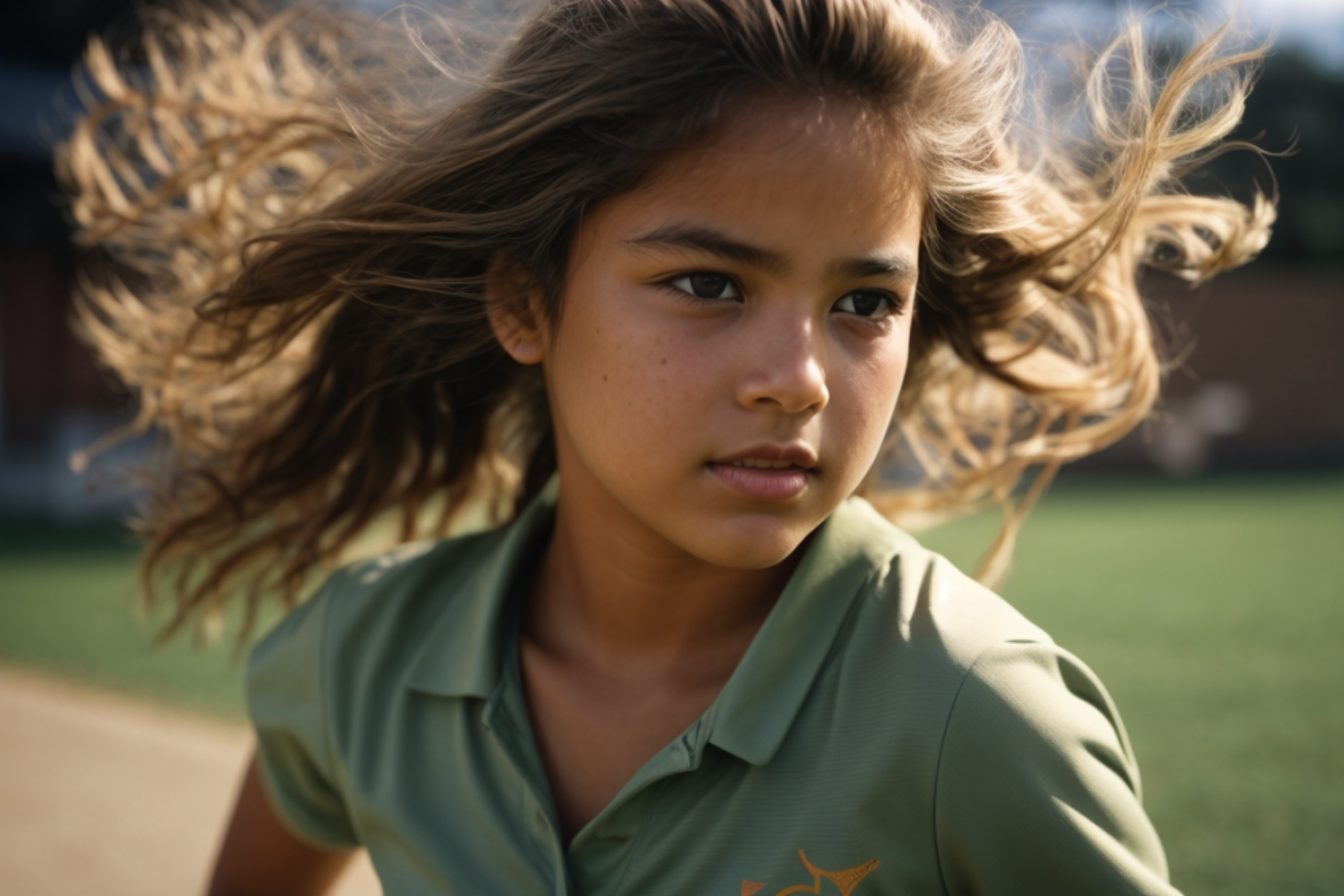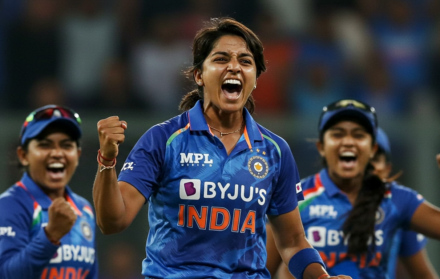
Inclusivity and Diversity in Kids Cricket
Inclusivity and diversity play a crucial role in creating a positive and enriching experience within kids’ cricket. It goes beyond the boundaries of just a sport, promoting equal opportunities and breaking down barriers that may exist.
Emphasizing the significance of inclusivity and diversity in kids cricket, reputable cricket organizations such as the England and Wales Cricket Board (ECB) and the Marylebone Cricket Club (MCC) have highlighted the benefits it brings to young players.
Inclusivity in kids’ cricket fosters teamwork and collaboration, allowing children from diverse backgrounds to come together, learn from one another, and build lasting friendships. It also helps in building confidence and self-esteem, giving every child the opportunity to participate and shine, regardless of their skill level or background.
Promoting inclusivity and diversity in kids’ cricket instills values of acceptance and respect, teaching children to appreciate and celebrate differences. It enhances cultural awareness, introducing young players to various cultures and traditions, fostering a sense of global understanding.
One avenue that exemplifies the spirit of inclusivity is Sixes Social Cricket. By incorporating innovative practices and cutting-edge technology, Sixes Social Cricket not only introduces young players to the thrill of the sport but also ensures that cricket becomes a welcoming space for all.
The inclusive nature of the cricketing experiences offered by Sixes Social Cricket resonates with the broader goal of providing equal opportunities for all young players, irrespective of their backgrounds.
In this article, we will explore the importance of inclusivity and diversity in kids’ cricket, the benefits of a diverse cricket team, strategies to promote inclusivity within cricket clubs, and the role of parents, schools, and cricket associations in supporting diversity.
We will also discuss the challenges faced in promoting diversity in cricket and propose solutions to address them effectively. By creating an inclusive and diverse environment in kids’ cricket, we can provide equal opportunities and a transformative experience for all young players.
The Importance of Inclusivity and Diversity in Kids’ Cricket
The importance of inclusivity and diversity in children’s cricket cannot be overstated. It promotes fairness, equality, and nurtures a beneficial environment for children to learn and grow. Here are some reasons why inclusivity and diversity are crucial in children’s cricket:
1. Encourages participation: Inclusive and diverse teams attract a wide range of individuals, regardless of their background or abilities. This ensures that all children have the chance to engage in cricket and enhance their skills.
2. Fosters a sense of belonging: When children from different backgrounds, cultures, and abilities come together in a team, it fosters unity and a feeling of belonging. It helps children develop empathy, respect, and appreciation for others.
3. Enhances skill development: Playing alongside individuals with diverse experiences and abilities enriches proficiency. Different playing styles, strategies, and techniques enhance the gameplay, enabling children to learn from each other and improve their skills.
4. Boosts personal growth: Inclusivity and diversity empower personal growth by fostering self-confidence and self-esteem. Children learn to embrace their unique qualities and contributions, enabling them to face challenges both on and off the field.
Suggestions for promoting inclusivity and diversity in children’s cricket:
1. Organise inclusive training sessions and camps for children with varying abilities and backgrounds.
2. Collaborate with community organizations and schools to reach out to a diverse range of children and promote cricket as an inclusive sport.
3. Provide equal opportunities for children to participate in matches and showcase their skills, regardless of their background or level of experience.
4. Educate coaches, parents, and players about the importance of inclusivity and diversity, fostering a supportive and welcoming environment for all.
By embracing inclusivity and diversity, children’s cricket can create a positive and transformative experience for all participants, nurturing a lifelong love for the sport.
Promoting Equal Opportunities
Studies have consistently shown that promoting equal opportunities in sports proves to be beneficial not only for individuals, but also for society as a whole.
In line with this, our organization is committed to providing inclusive training programmes for all children, ensuring that every child has the opportunity to participate in cricket, regardless of their background or abilities.
We firmly believe that financial limitations should never hinder children from pursuing their passion for cricket, which is why we offer scholarships and financial assistance to families facing economic barriers.
To foster inclusivity and create a welcoming environment for all children, we have taken steps to establish a diverse coaching staff. By doing so, we aim to provide role models who can inspire and guide children from all walks of life.
In addition, we have implemented fair selection processes that prioritize skills and talent, rather than social status or personal connections. This ensures that every child has an equal chance to showcase their abilities and be a part of our cricket programs.
Challenging gender stereotypes is also an important aspect of our work. To promote inclusivity and gender equality, we organize mixed-gender teams and tournaments. By doing so, we aim to break down barriers and create opportunities for both boys and girls to thrive in the world of sports.
We actively collaborate with schools and community organizations to ensure that children from diverse communities have equal access to our cricket programs. By leveraging these partnerships, we can effectively reach out to children and provide them with the resources they need to fully participate in cricket.
We understand that every child is unique and has different learning styles and abilities. Therefore, we provide coaching sessions and resources tailored to accommodate children with disabilities or special needs, so that they too can enjoy the benefits of participating in cricket.
In our commitment to promoting equal opportunities, we also establish partnerships with organizations that share our values of inclusivity and diversity in sports. By leveraging their expertise and resources, we can work together to create more equal opportunities for all children to participate and excel in cricket.
By adhering to these principles and implementing these strategies, we believe that we can create a more inclusive and harmonious society, where every child has the chance to thrive in the world of sports.
Breaking Down Barriers

Breaking down barriers in children’s cricket is crucial for promoting inclusivity and diversity. By addressing these barriers, we can create a more welcoming environment for all children who wish to participate.
Equal opportunities: Every child should have the opportunity to play cricket, regardless of their background, gender, or ability. Cricket clubs should provide equal access to resources, facilities, and coaching to ensure inclusivity.
Financial support: Financial constraints should not limit a child’s participation in cricket. Cricket organizations should offer affordable membership fees, equipment loan schemes, and scholarships to ensure that no child is left behind due to financial reasons.
Language and cultural barriers: Promoting cultural diversity in cricket can be achieved through coaching sessions in multiple languages and providing information in different languages. Encouraging a diverse coaching staff can also help create a more inclusive environment.
Gender equality: Encouraging more girls to participate in cricket requires establishing teams exclusively for girls and creating opportunities for them to compete against each other. By providing equal support and opportunities, we can create a more balanced and diverse cricket community.
To break down barriers in children’s cricket, cricket clubs, organizations, and communities must actively address these issues.
By fostering inclusivity, equal opportunities, and embracing diversity, we can create a cricket environment that celebrates the spirit of the game for all children. Let us work together to make children’s cricket accessible and inclusive for everyone.
Note: Breaking down barriers in children’s cricket is an ongoing process that requires continuous efforts and commitment from all stakeholders involved.
Fostering Teamwork and Collaboration
When promoting collaboration and teamwork in cricket for children, fostering teamwork and collaboration is important. To achieve this, coaches and mentors should take into consideration the following factors:
- Communication: Encourage open communication through regular team meetings and practice sessions. This will help foster teamwork and collaboration.
- Shared goals: Ensure that all team members understand and are aligned with the objectives of the team. This shared understanding will create a sense of teamwork and collaboration.
- Roles and responsibilities: Clearly define the roles and responsibilities of each player. This clarity will promote teamwork and collaboration among team members.
- Trust and respect: Cultivate an environment of trust and respect among team members. Trust and respect are essential for fostering teamwork and collaboration.
- Collaborative decision-making: Involve all team members in the process of making decisions. This inclusive approach will enhance teamwork and collaboration.
- Embracing diversity: Embrace and celebrate the diverse strengths and skills within the team. Recognizing and valuing diversity will foster teamwork and collaboration.
By implementing these strategies, coaches and mentors can effectively promote teamwork and collaboration in cricket for children. This will create a unified and successful team environment for both individual and collective growth.
Building Confidence and Self-Esteem

Building confidence and self-esteem is paramount for children, especially young cricketers. Implementing certain strategies can help foster confidence and self-esteem in young cricketers:
1. Utilize positive reinforcement: Make it a point to encourage and commend children for their efforts and achievements, irrespective of their size. This will greatly enhance their confidence and self-esteem. Coaches and parents should focus on their progress and highlight their strengths.
2. Set realistic goals: Establishing attainable objectives will assist children in building confidence and cultivating a sense of accomplishment. Breaking down significant goals into smaller ones will enable them to track their progress and experience a sense of achievement.
3. Provide opportunities for success: Give children the chance to succeed and showcase their abilities. This can be accomplished through practice matches, friendly competitions, or participation in tournaments.
4. Highlight the importance of effort: Emphasize the value of hard work and dedication, illustrating that improvement comes with practice. This will elevate children’s confidence in facing challenges.
5. Foster a supportive environment: Create a safe and inclusive atmosphere where children feel comfortable expressing themselves and making mistakes. Encourage teamwork, respect, and positivity among teammates and coaches.
Instilling Values of Acceptance and Respect
In order to promote inclusivity and diversity in children’s cricket, it is crucial to instill values of acceptance and respect. By creating an environment that values these principles, children can learn to appreciate and respect each other’s differences.
Here are some ways to incorporate these values into children’s cricket:
1. Encourage collaboration: Stress the importance of working together as a team, regardless of background or abilities. This fosters acceptance and helps children recognize and appreciate the diverse skills and contributions of their teammates.
2. Teach empathy: Help children develop empathy by encouraging them to understand the feelings and perspectives of others. This promotes respect and tolerance towards their teammates and opponents.
3. Promote fair play: Emphasize the importance of fairness and integrity in the game. Teach children to respect the rules, make ethical choices, and treat opponents with dignity.
4. Celebrate diversity: Create opportunities for children to share and celebrate their cultural backgrounds and experiences. This helps foster an inclusive environment where everyone feels valued and accepted.
5. Role modeling: Lead by example and display respectful behavior towards all players, coaches, and officials. Children learn best when they have positive role models, so it is essential to demonstrate acceptance and respect through your actions and words.
Fact: Research has shown that promoting acceptance and respect in sports has a positive impact on children’s social and emotional development. It helps them embrace diversity and build strong relationships, both on and off the field.
Enhancing Cultural Awareness
Enhancing cultural awareness is crucial for promoting inclusivity and diversity in children’s cricket. By fostering a deeper understanding and appreciation of various cultures, we can create a more inclusive environment for all participants.
To achieve this, we can consider the following approaches:
- Introduce cultural education: Implement educational sessions that provide insights into different cultures, including their traditions, customs, and values. This can be done through workshops, presentations, or interactive activities.
- Promote cultural exchange: Encourage players from diverse backgrounds to share their cultural experiences, stories, and traditions with their teammates. This can be accomplished through team-building exercises, shared meals, or cultural exhibitions.
- Celebrate cultural holidays and festivals: Recognize and celebrate important cultural holidays and festivals within the cricket community. This can be achieved by organizing special events, themed matches, or friendly competitions.
- Engage with the local community: Collaborate with local community organizations, cultural centers, or ethnic clubs to create opportunities for cross-cultural interactions. This can involve joint training sessions, friendly matches, or community outreach programs.
- Facilitate language exchange: Encourage players to learn key phrases or greetings in different languages to foster better communication and understanding. This can be integrated into training sessions or team meetings.
Developing cultural awareness in children’s cricket not only enhances their understanding of different cultures but also promotes empathy, respect, and teamwork.
It cultivates a welcoming environment where everyone feels valued and included, contributing to the broader objective of creating a more diverse and inclusive sporting community.
Research has consistently shown that promoting cultural awareness in sports can improve team cohesion and performance, as players with diverse cultural backgrounds bring unique perspectives and skills to the game.
Encouraging Participation from All Backgrounds
When it comes to encouraging participation in children’s cricket, there are several factors to consider:
- Accessible Facilities: Cricket facilities should be easily accessible to all communities. This includes having grounds in different locations, such as urban and rural areas, and equipping them with amenities like changing rooms and accessible seating.
- Inclusive Outreach Programmes: Outreach programmes targeting underrepresented communities can help encourage participation. These programmes should focus on providing cricket education, training, and opportunities to children from different backgrounds, regardless of gender, ethnicity, or socio-economic status.
- Diverse Representation: Having diverse role models and coaches involved in children’s cricket will inspire children from different backgrounds to participate and create an inclusive environment.
- Financial Support: Initiatives like scholarships, sponsorships, and subsidies can help alleviate financial barriers and ensure that children from all backgrounds have the opportunity to participate.
- Safe and Inclusive Culture: Fostering a safe and inclusive culture is crucial. This includes implementing anti-discrimination policies, promoting respect and fair play, and providing support and resources to address any issues that arise.
By prioritising accessibility, inclusivity, and diversity, we can create an environment that encourages participation from all backgrounds and ensures that every child has the opportunity to enjoy and benefit from this wonderful sport.
Providing Accessible Facilities and Equipment

When providing accessible facilities and equipment in children’s cricket, there are significant factors to take into account.
These factors encompass wheelchair accessibility, adaptable equipment, a sensory-friendly setting, accessible changing rooms and toilets, availability of extra support, financial accessibility, inclusive coaching, and community collaborations.
By incorporating these measures, cricket programs can offer comprehensive and accessible experiences to all children.
Creating Inclusive Coaching Practices
Creating inclusive coaching practices is crucial for promoting diversity and ensuring equal opportunities in children’s cricket. Here are key strategies to consider:
1. Diversify coaching staff: To create an inclusive environment, the coaching team should reflect the diversity of the players. This builds trust and understanding among different cultural backgrounds.
2. Ensure equal playing time: All players, regardless of skill level, should have equal chances to participate in matches and training sessions. This fosters a sense of belonging and encourages the development of all players.
3. Adapt coaching methods: Tailor coaching methods to the individual needs and abilities of each player. This may involve using different teaching techniques, providing additional support, or modifying drills for players with different abilities.
4. Encourage open communication: Create a safe and inclusive environment where players feel comfortable expressing themselves and sharing their experiences. Promote open dialogue about diversity and inclusion, fostering respect and understanding among players.
5. Cultivate a positive team culture: Foster a team culture that celebrates differences and embraces diversity. Encourage players to appreciate and learn from each other’s backgrounds, experiences, and perspectives.
6. Provide resources and support: Equip coaches with resources and training on diversity and inclusion to enhance their understanding and ability to create inclusive coaching practices.
7. Regularly evaluate and adapt: Continuously assess coaching practices to ensure they are inclusive and meeting the needs of all players. Seek feedback from players and parents to identify areas for improvement and make necessary adjustments.
By implementing these inclusive coaching practices, a positive and supportive environment can be created where all children, regardless of their backgrounds or abilities, can thrive and enjoy the game of cricket.




